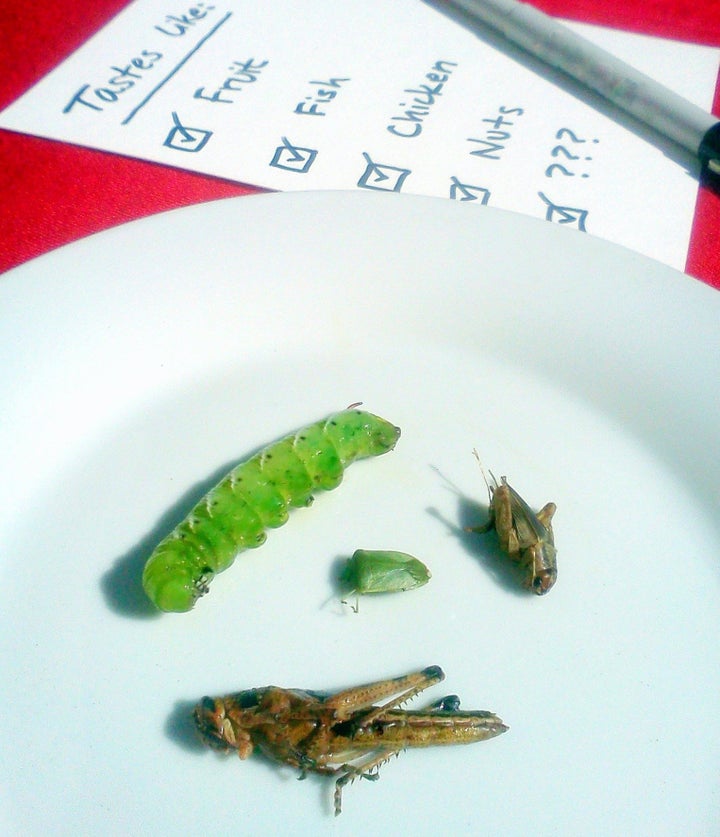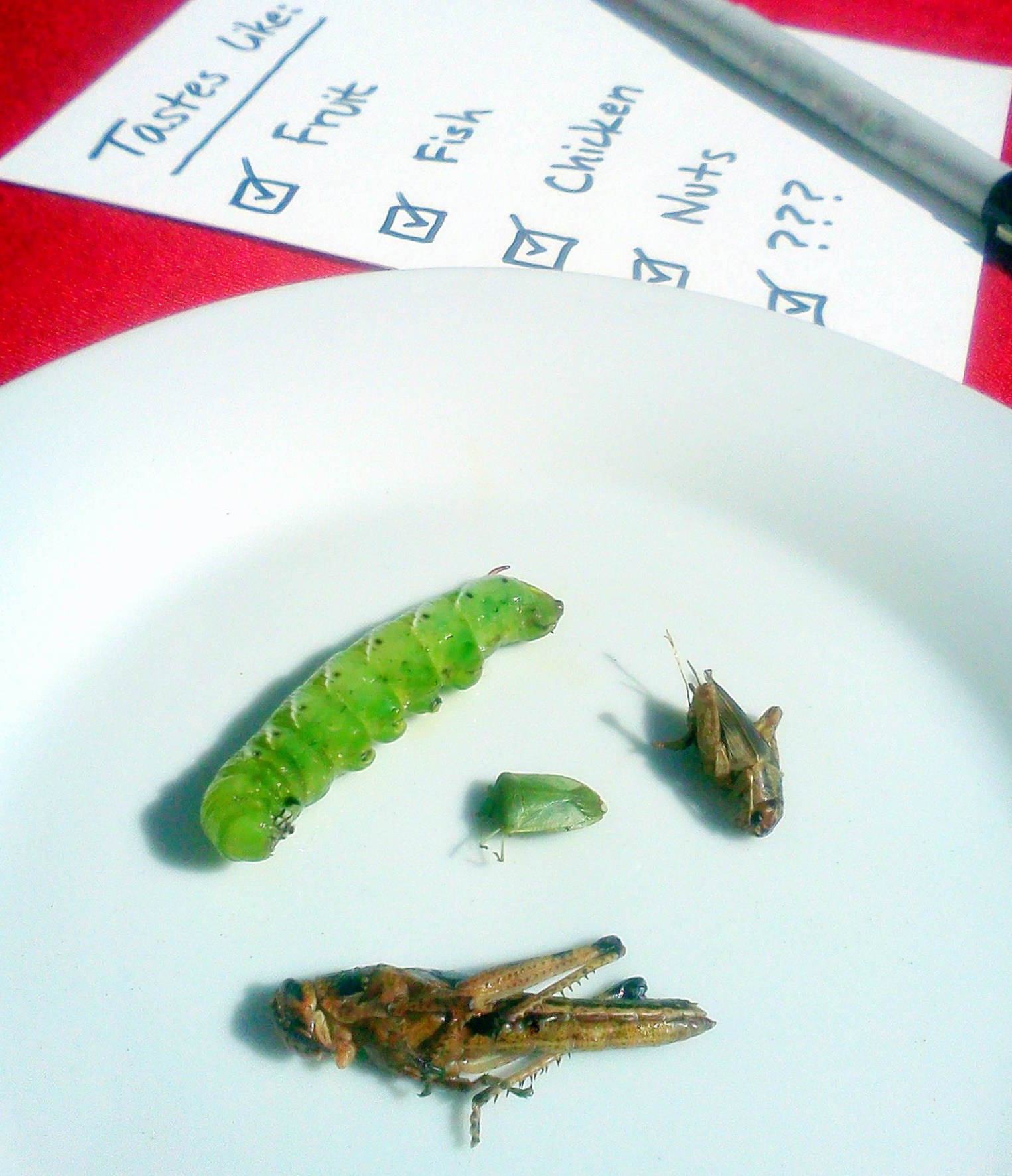
It may have crawled into your consciousness lately that edible insects are the new green thing: they are extremely sustainable to raise, requiring far fewer resources than other forms of livestock, and they produce fewer greenhouse gas-causing emissions per pound of protein. To put this into perspective, a pound of crickets requires nearly 1000 times less water to produce than a pound of beef, and the livestock sector has been credited with contributing more GHGs than transport. Meanwhile, insects are highly nutritious (crickets contain more iron and calcium than beef); and are eaten in more cultures than not, putting the US, and our bug-sneering ways, in the minority.
Green is good, agree most folks. But how do they taste?
With nearly 1500 edible insect species to choose from, it's a complex question to answer. How many different types of meat have you sampled in your lifetime? Most people never get beyond the standard dozen-plus basics of chicken, beef, pork, lamb, and 5-10 kinds of fish. Compared to the 250 varieties of insect eaten in Mexico alone, this is a fairly limited flavor palette -- the "beginner box" of culinary Crayolas.
Insects, on the other hand, represent the majority of the animal biomass on earth. They have thousands of different habitats, and many of them are dependent on eating just one type of plant, creating a kaleidoscope of flavor potentials. There are, however, some generalities.
On the whole, insects tend to taste a bit nutty, especially when roasted. I believe this comes from the natural fats they contain, combined with the crunchiness of their mineral-rich exoskeletons. Crickets, for instance, taste like nutty shrimp, whereas most larvae I've tried have a nutty mushroom flavor. My two favorites, wax moth caterpillars (AKA "wax worms") and bee larvae, taste like enoki-pine nut and bacon-chanterelle, respectively.
Recently, when I served this grub at the LA Natural History Museum's Big Bug Cook-off, one kid on the judging panel said my "Alice in Wonderland" dish of sauteed waxworms and oyster mushrooms tasted like Macaroni and Cheese, while the rest agreed that my "Bee-LT Sandwich" tasted like it was made with real bacon. Bug-con. Bee-con?
The term "bug," while having a specific taxonomic meaning, is also used as an umbrella term to include land-arthropods in general, including arachnids, like scorpions and spiders. The arachnids often taste like a light, earthy version of shellfish, crab and lobster in particular. This makes sense, since from a biological stand point, bugs and crustaceans are quite closely related. However, the air-breathing group of invertebrates has one distinct advantage over its sea-steeped brethren: they aren't bottom feeders. Scorpions, tarantulas, and other edible arachnids all catch their prey live, unlike a crab which may be just as happy to feast on detritus.
These examples are fairly tame and recognizable; most people can swallow the idea of nutty mushrooms and earthy shellfish. But there are flavors in the bug world that can hardly be equated with anything familiar. The giant water beetle, also known as a toe-biter, practically defies description; as one writer enthused after his first time eating them, "There is simply nothing in the annals of our culture to which I can direct your attention that would hint at the nature of [its] flavor."
For the sake of this article, however, I will do my best to capture the experience: when fresh, these aggressive beetles have a scent like a fresh green apple. Large enough yield tiny filets, they taste like melon soaked in banana-rose brine, with the consistency of red snapper. It's no wonder their extract is a common ingredient in Thai sauces.
Conservative eaters are likely to prefer to stick to what they know, but if you're anything like me, you'll find this galaxy of mysterious new flavors simply too compelling to resist. Meanwhile, your home planet will thank you for choosing a more sustainable source of protein, and you'll wonder why you ever thought eating bugs was in bad taste.
Bug appetit!
